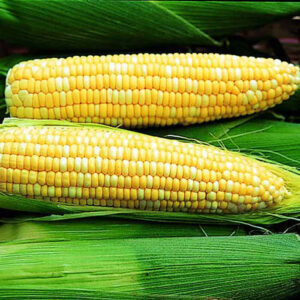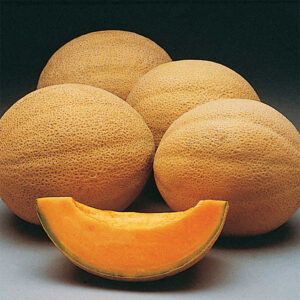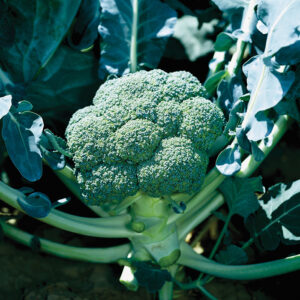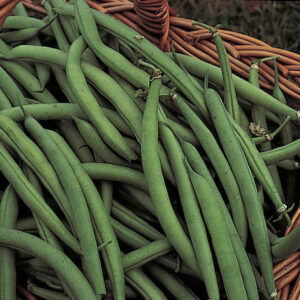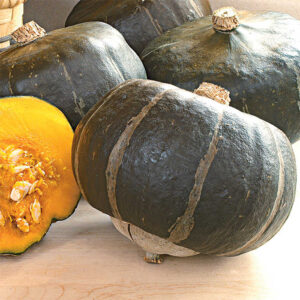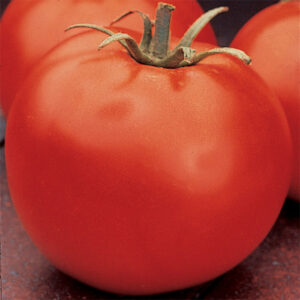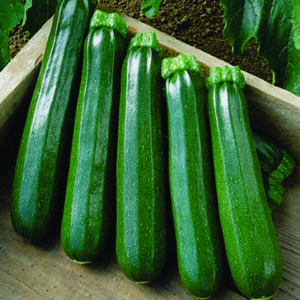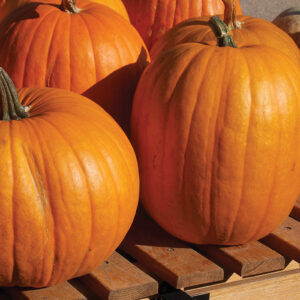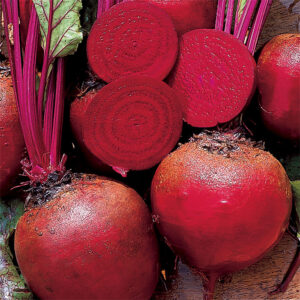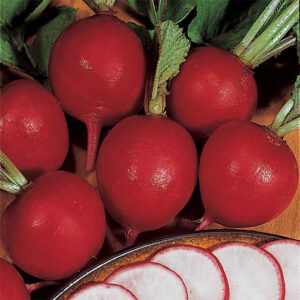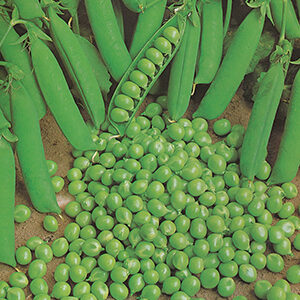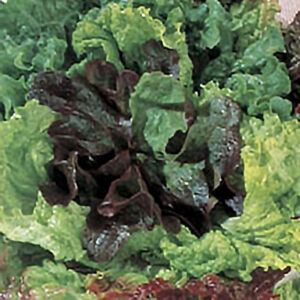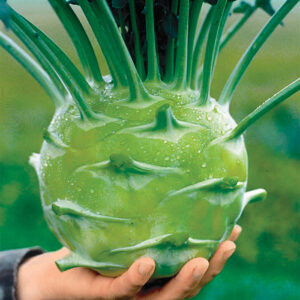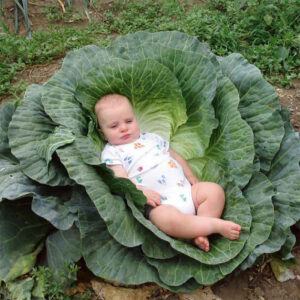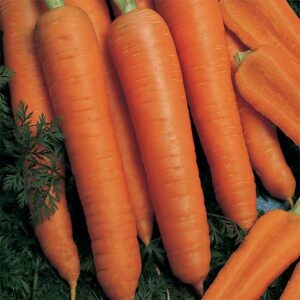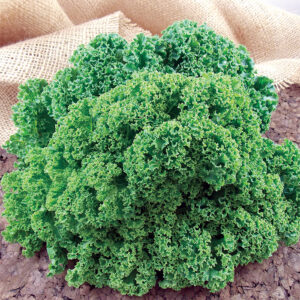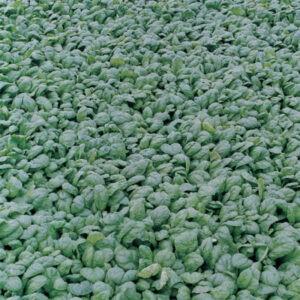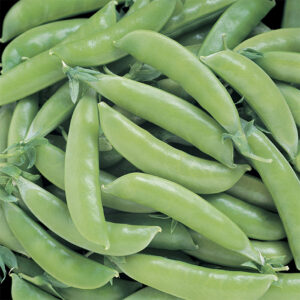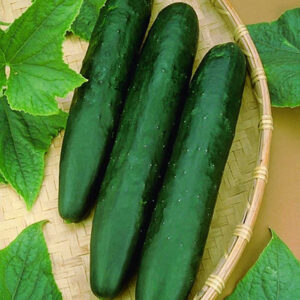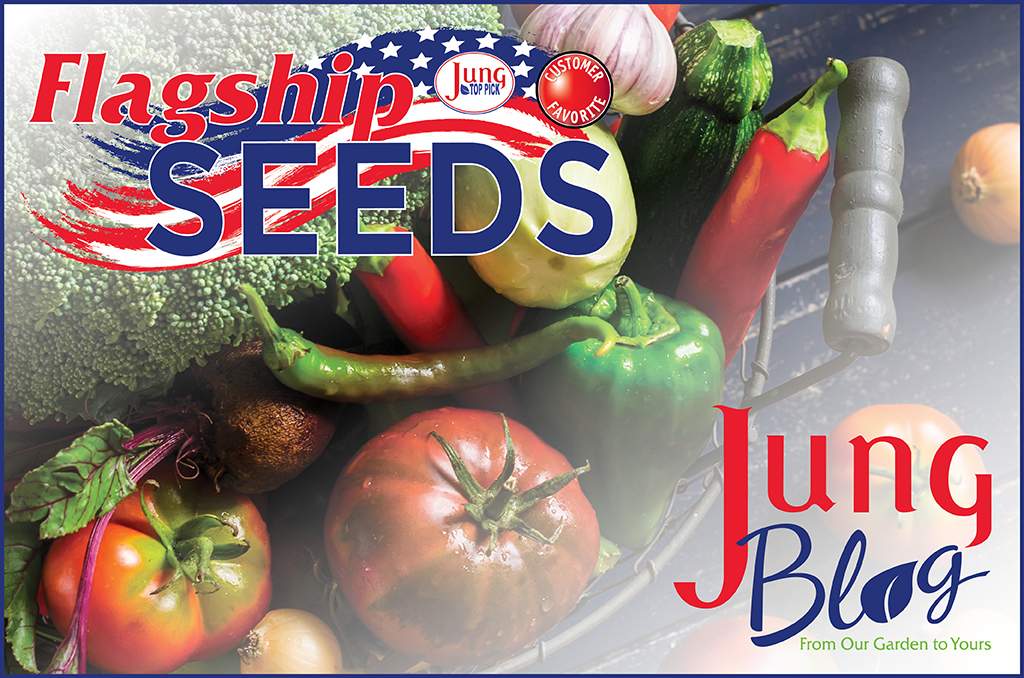
Last year we saw more new people join our Jung gardening family than ever before! Helping gardeners on their growing journey is one of our favorite parts of the job.
An aspect of garden planning that can be challenging to all gardeners is what varieties of seeds to try in their garden. There are thousands of choices and plenty of time and research can go into this decision. To help our gardening friends find the answer to the ongoing questions of what should I grow? And which seeds varieties are best for my garden? We created a new seed collection lovingly named the “Flagship Seeds.”
The Flagship Seed collection is very important to us as it is a compilation of seed varieties that have been leading the pack in top sellers and customer favorites for years. We enjoy growing these varieties in our own gardens for proven flavor and productivity.
Now that you are ready to start growing plants from seed for your outdoor garden, here is a list of tried-and-true varieties that you cannot go wrong with.
The Flagship Seed Collection
A bi-color homozygous sugary enhanced hybrid is excellent for eating. Its ears are 8 inches long, 2 inches in diameter, and filled with 16 rows of sweet, tender-crisp, juicy kernels. Ambrosia is noted for its early vigor and high tolerance to Stewart’s wilt.
Growing Tip: Plant sweet corn seed in organically rich, well-drained warm soil. For best results fertilize with Jung Jump-Start water-soluble sweet corn food when plants are 4 to 6 inches tall, again at 8 to 10 inches tall and lastly when silks appear. Look for ears to be ready to harvest 18 to 21 days after silks appear.
This innovative melon allows the fruit to stay on the vine to maximize sweetness without becoming soft. The large, attractively netted, 7-inch oval fruits have a small seed cavity, weigh 5 to 7 lbs. and ripens early. The firm melon-orange flesh is sweet and juicy. Battles disease and stress resulting in high yields of uniform, high-quality fruit.
Growing Tip: Start 3 to 4 seeds in plantable pots indoors 3 to 4 weeks from planting out (when soil temperature is 60°F). After hardening off, plant pots in hills at 4 to 6 feet spacing. Water plants regularly to keep the soil moist but not saturated. Too much water makes flavorless melons. Feed with water-soluble food once per month. Deploy floating row covers to protect from insects. Pull off during mid-day for pollinator access.
This variety has proven to be a dependable performer wherever it’s grown, even when conditions aren’t always favorable. It produces beautifully domed and tightly packed 6 to 8, inch blue-green heads, plus good side shoots for second cuttings. It can be planted in spring or fall. Belstar grows vigorous 16 to 20-inch plants.
Growing Tip: Plant broccoli in cool of early spring or fall when temperature the range is between 40° and 70°F. Plant in well-drained, organically rich soil. Water and feed consistently for the best results.
Blue Lake grows a sturdy bush, 15 to 18 inches tall, which bears a heavy crop of round pods, 6 to 7 inches long. It is very meaty and free of strings and fiber. The flavor is outstanding! If pods are kept picked as they develop, the bushes will bear over a long period of time.
Growing Tip: Sow bean seeds after all threat of frost has passed and plant successive crops 2 to 3 weeks apart. Germinate best in soil temps of 65° to 75°F. Utilize fresh Nature’s Aid inoculant on the planting bed or coat pre-soaked seeds prior to planting.
AAS Winner! A classic buttercup with sweet-as-candy flavor and space-saving vines. The thick orange flesh has a rich, creamy texture when cooked and a “bonbon” sweet flavor. Upright, semi-bush 8 foot vines are an advantage for smaller gardens. The 4-pound dark green squash ripens a full week earlier than similar buttercup varieties. Wide adaptability and good disease resistance ensure a good crop wherever it’s grown.
Growing Tip: A cucurbit that prefers well-drained organically rich soil. Plant 4 to 5 seeds in hills in full sun with hills 6 to 8 feet apart. After germination thin out the weakest seedlings, leaving 3 to 4 of the strongest. Feed with water-soluble food with 2-4-2 formula.
Outstanding disease resistance and hybrid vigor make this tomato a standout. Celebrity is a strong semi-determinate plant well adapted to bush, cage, or short stake production. The fruit is large and deep red with exceptionally good flavor. It is very productive with the ability to produce under a broad range of conditions.
Growing Tip: Tomatoes are subtropical plants that like the heat. Soak seeds for 2 to 4 hours prior to planting. Water consistently. After 2nd set of true leaves fertilize with water-soluble food specific to tomatoes with added calcium for best results.
AAS Winner! Harvest loads of delicious zucchini on space-saving plants. Enjoy early crops of glossy, dark green fruits with creamy-white, tasty flesh. The upright, open bush allows for easy, fast picking. Harvest at 7 to 8 inches for peak flavor.
Growing Tip: Bush squash need less room than vining varieties but do not crowd them. Plant in full sun in well-drained organically rich soil. Fast to maturity at 53-days. Feed with 2-4-2 formulated water-soluble veggie fertilizer.
This heirloom variety is our most popular jack-o’-lantern pumpkin. Its fruit is large, smooth, and bright golden-orange weighs 15 to 25 lbs. or more and is slightly flattened at both ends, so they don’t tip. Connecticut Field can be used for pies or canning.
Growing Tip: Heirloom pumpkin for carving or baking. Plant when temperatures are warm, after all the threat of frost has passed. Plant in well-drained, organically rich soil in full sun. Provide 5 to 6 ft. spacing and water consistently. Keep weeds suppressed. Avoid wetting foliage to prevent fungal issues and always rotate pumpkin crops with two years between planting patches.
This improved selection of the popular Detroit Dark Red beet produces higher yields of smooth, uniform globe-shaped roots. The flesh is tender, fine-grained, sweet, and deep red throughout with indistinct zoning. It is excellent as large dicing beets as they do not get woody, or use them small for canning and pickling. The glossy green medium tops make tangy boiling greens.
Growing Tip: Start beet seeds in well-cultivated loose, well-drained organically rich but slightly alkaline soil. Sow seeds direct in rows of 12 inches apart. Cover seed, but very lightly. When seedlings are 2 inches tall, it is critical to thin plants to 3 inches apart to prevent all greens and no roots.
Jung Seed Favorite! You’ll be astonished at the size of this ‘giant’ radish. You can begin pulling them when the size of a quarter and we’ve had some in our trials as big as baseballs! Regardless of the size of the roots, it remains sweet and crisp with no cracking.
Growing Tip: Sow radishes in cool weather of early spring or again in late summer for fall harvest. Warm weather can make radish plants bolt or form greens but no roots. Plant in rows of 6 inches apart, water consistently, thin seedlings to 2 inches apart for best results.
Green Arrow Garden Shelling Pea
This excellent quality, maincrop pea, developed in England. It produces high yields of extra-long pods filled with 9 to 11 bright green, tender, and delicious peas. The vines can grow 28 inches long. Green Arrow is resistant to both Downy Mildew and Fusarium Wilt. The peas freeze well and remain sweet for a long time.
Growing Tip: Peas do best in cool weather, sow in early spring. Water consistently, but do not over-saturate soil or seeds can rot. Sprinkle fresh inoculant in soil bed at the time of sowing. Sow 2 inches apart in double rows of 6 inches apart with 2 feet spacing between each double row. Install some short trellis or guidewires for support. Let pods fully mature to 5 inches before harvesting. Peas are removed from shells to be eaten.
Jung Sweet Repeat Leaf Lettuce Blend
Jung Seed Exclusive! Sweet Repeat is a blend of tender, tasty leaf lettuce varieties. It includes many leaf forms and colors, all adapted to a “cut-and-come-again” culture for repeated harvest over several weeks.
Growing Tip: Lettuce can be sown in cool weather into well-drained, organically rich soil. No need to cover seed, lettuce requires light to germinate well. Sow lightly in rows of 1 foot apart. Sow leaf lettuce at 2-week intervals for repeating crops. Stop when temps. rise over 70°F.
One of the most popular bell peppers available. King Arthur grows well almost anywhere. Its big, blocky 4 1/2 inch bells have thick, meaty walls. The flavor is sweet and crunchy whether harvested green or red. Sturdy, 22-inch plants begin bearing early and keep on producing for exceptional yields. Tolerant to TMV and PVY.
Growing Tip: Peppers, like tomatoes, are subtropical and prefer heat to grow well. Start seeds indoors 4 to 6 weeks prior to planting out after threat of frost. Offer seedlings strong light for 16 hours and 8 hours of dark to do well. After the hardening off period, plant into the garden at 18 inches spacing in rows 2 to 3 feet apart. Fertilize once per month with veggie formulated, water-soluble food.
Kossak grows incredibly huge, rounded bulbs up to 10 inches across. It grows at least twice the size of other kohlrabi and yet the white flesh maintains its sweet, delicate flavor with no trace of woodiness. Smaller bulbs can be harvested earlier to allow about 12-inch spacing for the giants.
Megaton lives up to its name producing some of the largest cabbage available between 15 to 25 pounds. Even at this large size, the heads hold without cracking. The solid white interior retains its mild, sweet flavor. Megaton has a great disease resistance to Fusarium yellow, tip burn, ring spot, and split.
Growing Tip: Cabbage, like broccoli and cauliflower, is a cool-season crop. Start seeds early to avoid bolting in warm temperatures. Sow seeds indoors 6 weeks before the last frost date. After hardening off, plant out at 2 feet spacing with rows of 3 to 4 feet apart. Water consistently and fertilize once per month. Reminder, ‘Megaton’ matures in a long 90-day period.
Napoli, the sugar carrot, is a 3-season carrot. It can be harvested at 45 days for bright orange baby carrots or let grow to 7 to 8 inch full-size. One of the best carrots for overwintering.
Growing Tip: You may sow carrots early in cool soils, but germination is slower. In warmer soils, seed germination will be 14 to 21 days. Sow seed in rows with 1-foot spacing. Press seeds into soil for good contact, no need to cover. Keep soil moist but not saturated. When seedlings are 3 inches tall, thin to 1 inch apart. Keep weeds carefully cultivated out and water consistently and deeply.
AAS Winner! Prizm can be grown in containers or in the ground. It has short, tight ruffle edged leaves with almost stemless stalks. Its excellent taste has an almost nutty flavor. Great for salads and stands up to cooking well.
Growing Tip: Sow kale seeds in cool early spring or later in summer for a fall crop. Can be started indoors 4 weeks prior to planting out. In garden spacing should be 1 to 2 feet apart. As plants mature, outer leaves can be harvested first to leave plants in place to continue to grow. Well-drained, organically rich soil with slight alkalinity is best.
AAS Winner! The advantages of true hybrid vigor are apparent in the steady yields of uniform, 2-pound heads which are pure white, solid, well-rounded, and smooth. Snow Crown has a delicious flavor and texture. Ideal for home gardeners as it matures early.
Growing Tip: Cauliflower requires consistently cool weather for seedlings and plants to perform well. Plant in full sun, in well-drained soil at 18 inches to 2 feet apart. Water consistently, feed regularly with water-soluble veggie specific fertilizer.
Space has the longest harvest period of any spinach. It is quick-growing for baby leaf harvest and resists heat and mildew so production isn’t halted by early bolting. The dark green, smooth, upright leaves are easy to clean. You can use it fresh or cooked, and it freezes well, too. Unlike most spinach, it can be planted in spring, summer, and fall, providing three seasons of eating pleasure.
Growing Tip: Sow spinach seeds direct or start indoors 4 weeks prior to the last frost date. In garden spacing should be 6 inches apart in rows 18 inches to 2 feet apart. Keep weeds carefully cultivated, spinach plants have shallow roots. Water consistently. Harvest older, outer leaves or baby leaf size for most flavor.
Super Sugar Snap has all the great qualities of the original Sugar Snap but with even thicker pods for extra sweet, crisp flavor. It bears several days earlier and has added resistance to Powdery Mildew and tolerance to Pea Leaf Roll Virus resulting in even higher yields. The compact vines grow 4 to 6 feet.
Growing Tip: Sow in cool weather season using fresh Nature’s Aid inoculant sprinkled onto the planting bed. Well-drained, organically rich soil is best. Early pests can be held off by utilizing floating row covers. Like shelling peas, sow seeds 2 inches apart in double rows 6 inches apart and 2 feet between rows. Give support with trellis, fence, or guide wires. Keep plants watered consistently, especially when dry. Tasty, fresh eating pods are ready in about 65-days.
Sweet Beauty Hybrid Watermelon
AAS Winner! All-America Selections judges praised this melon as having ‘superior taste and texture.’ When combined with ease of growing, early maturity, and strong fruit-setting ability, it had all the makings of a winner. The 6 to 8-pound ice box-size oblong fruits have sweet and juicy red flesh and a dark green rind with lighter stripes. Vigorous vines spread up to 9 feet and grow 3 feet tall, forming a semi-upright plant.
Growing Tip: This reliable AAS winning watermelon plant makes good 6 to 8-pound ice-box sized fruits in about 60-days. Easy to grow, when soil and weather turn warm. Plant in well-drained, organically rich soil in hills that are 4 to 6 feet apart. Seeds may be started in transplantable pots or super-sized Jiffy-7 starters indoors 5 weeks prior to planting out.
Sweet Success Ps Hybrid Cucumber
AAS Winner! Sweet Success is the ultimate ‘burpless’ cucumber for growing inside or outdoors. It produces loads of long, straight, spineless fruits 12 to 14 inches long by 2-1/2 inch diameter. The sweet, mild flesh is seedless if grown away from other cucumbers. Sets quality fruit without pollen. Good disease resistance.
Growing Tip: Sweet burp-less fruits form on parthenocarpic or self-pollinating blooms. Sow seeds direct in warm, well-drained organically rich soil. Space seeds 3 to 4 inches apart and cover with ½ inch of soil in rows 2 feet apart. If seeds are planted in clusters thin to 2 strongest and provide support like a fence or trellis. Roots and vines are sensitive to disturbance once started.

This collection of reliable and popular seed varieties is easy to grow and rewarding to harvest. We hope the Flagship Seed Collection becomes a favorite source of seed varieties for you and your family too.
After your growing season, take notes on what you liked and experienced. These details will be a huge help in deciding next year’s garden plan.
Gardening is a learning journey that never ends. Our family has been on our gardening journey for over 114 years. We are dedicated to providing high-quality seeds and expertise that will help you grow your best garden. Please reach out if we can help with any questions along the way.
Good luck & happy gardening!
